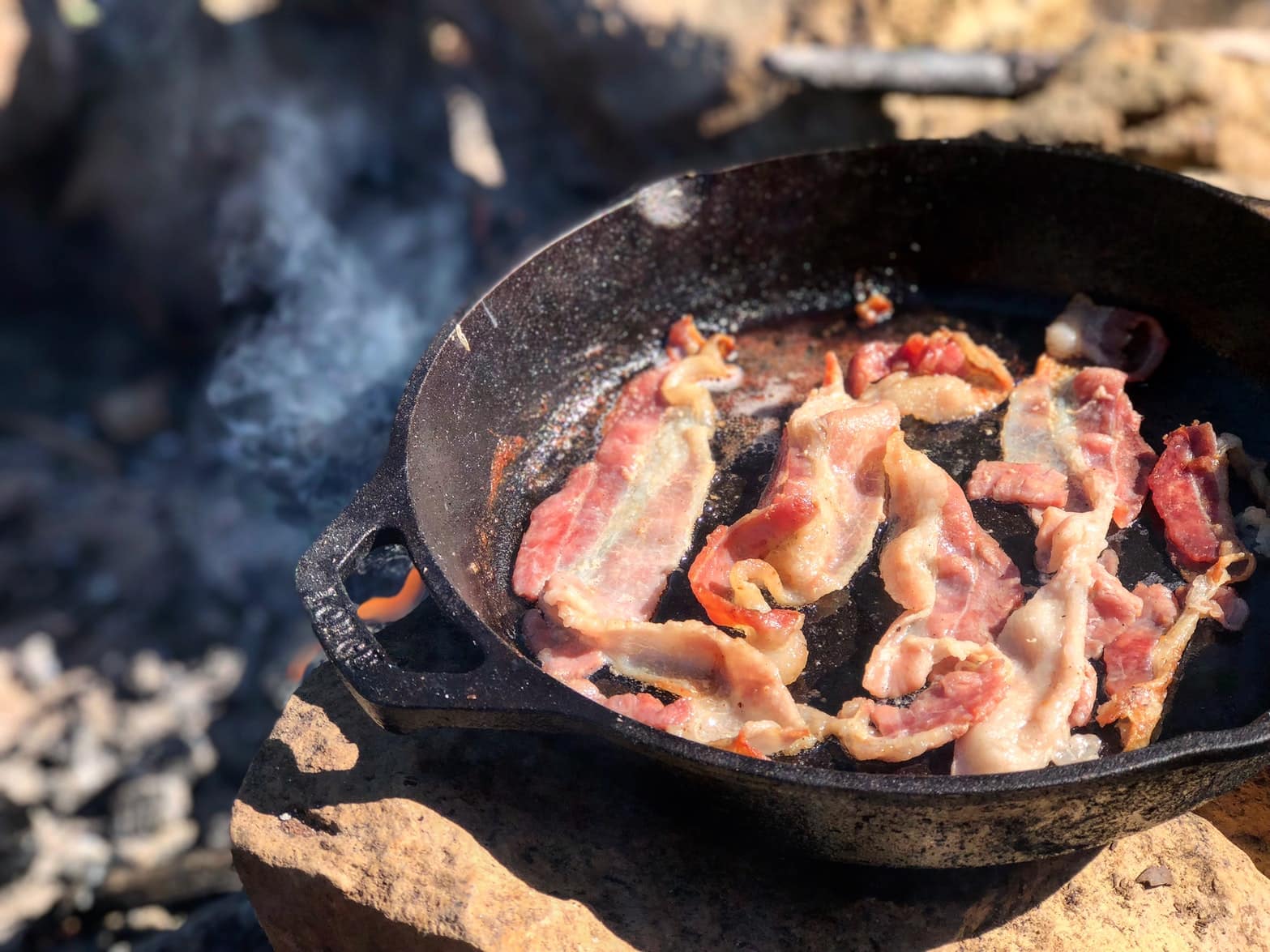Updated on October 22nd, 2023
Hardly would you come across a home where bacon isn’t a regular on the menu. Delicious, filling, and complementary to most foods, bacon is the classic breakfast meat you can bet you always think about. And not only is it tasty, but also rich in fat and proteins. And while many make it in an oven, there’s an easier way to get it crispy and ready without fuss; by cooking over the stove!
Handy Tips for Cooking Bacon on the Stove
Contrary to popular belief (and lots of scary stories flying out there), cooking bacon on the stove is very easy to do. All you need are some handy tips.
Choosing the Bacon
Bacon strips come in a range of meat to fat ratios. So, when choosing bacon, you must note that the higher the fat content, the more splatter you’ll get, as also would be the amount of dripping left behind after cooking. You must also note that thicker cuts of bacon are chewier than thinner ones. But whichever you pick, make sure that it’s nitrate-free, as these compounds are harmful to health.
Choose the Right Tools
When making stovetop bacon, you have a choice between using a griddle pan or a standard fry pan. Griddle pans are great for making large batches of bacon over the stove. But they can’t be screened, so you’ll experience lots of splatters since you have lots of bacon on them. Frypans can take a moderate amount of strips, and you can place a splatter screen over them. But whichever you use, be sure it’s made with cast iron. They heat evenly- a condition that’s perfect for making stovetop bacon.
And while most people prefer to turn the bacon strips with a spatula or a fork, the most convenient way is to use tongs. Yes, this will cause you to go closer to the pan or griddle and expose you to splatter, so a good way to protect yourself would be to wear an apron and oven mitts.
Start with a Cold Pan
Place the bacon strips in a cold pan before you turn on the heat. You can arrange for them to touch each other a bit, it won’t matter. Bacon strips tend to shrink as they cook.
Drain the Bacon
As you cook, you’ll need to take out the ready strips. Prepare a plate and place some newspapers or paper towels on it. You should lay the cooked strips here, so the paper can absorb most of the grease.
Save the Drippings
Bacon dripping is delicious liquid fat that can incorporate an explosive array of flavors into many recipes. So once you’re done, drain the drippings left in the griddle or pan into a jar and keep it in your fridge.
Cleaning Up After Making Stovetop Bacon
When you finish making bacon strips, you’ll notice some charred pieces on the own or griddle. Don’t fret; they’re easy to clean. Simply fill the pan halfway with water and place it on the stove to boil. As it does, gently scrape the pieces off the bottom with a wooden spatula. When you’re done, let the water cool, then pour it away in the sink; as for your stovetop, simply clean with a wipe cloth and elbow grease.
Now that you have all these great ideas, why don’t we try out an amazing, quick recipe?
PrintEasy StoveTop Bacon Recipe
Ingredients
- 12 strips of bacon
Instructions
- In a wide cast iron pan, arrange the bacon strips on a cold pan, so they overlap just a bit. Place the pan on the stove and turn it on to low heat.
- When you notice the bacon begin to release some of its fat, turn its sides from time to time with a pair of tongs. This ensures the strips don’t stick to the bottom and both sides cook evenly.
- The strips will begin to curl as they cook. This means they’re getting close to done. Keep flipping until both sides are evenly brown.
- Once they’re fully cooked, transfer bacon to a plate covered with newspapers and leave so the grease is soaked out. Let the grease in the pan cool off a bit, then drain into a glass or ceramic container and keep for later.
- If your own can’t take all 12 pieces, cook in batches of two. Make sure the grease in the pan is drained before you continue, so it doesn’t accumulate. Also, if the bottom has been charged by burnt bacon pieces, leave it to cool, clean it and continue cooking.
And check out this video recipe for more ideas about making stovetop bacon.

